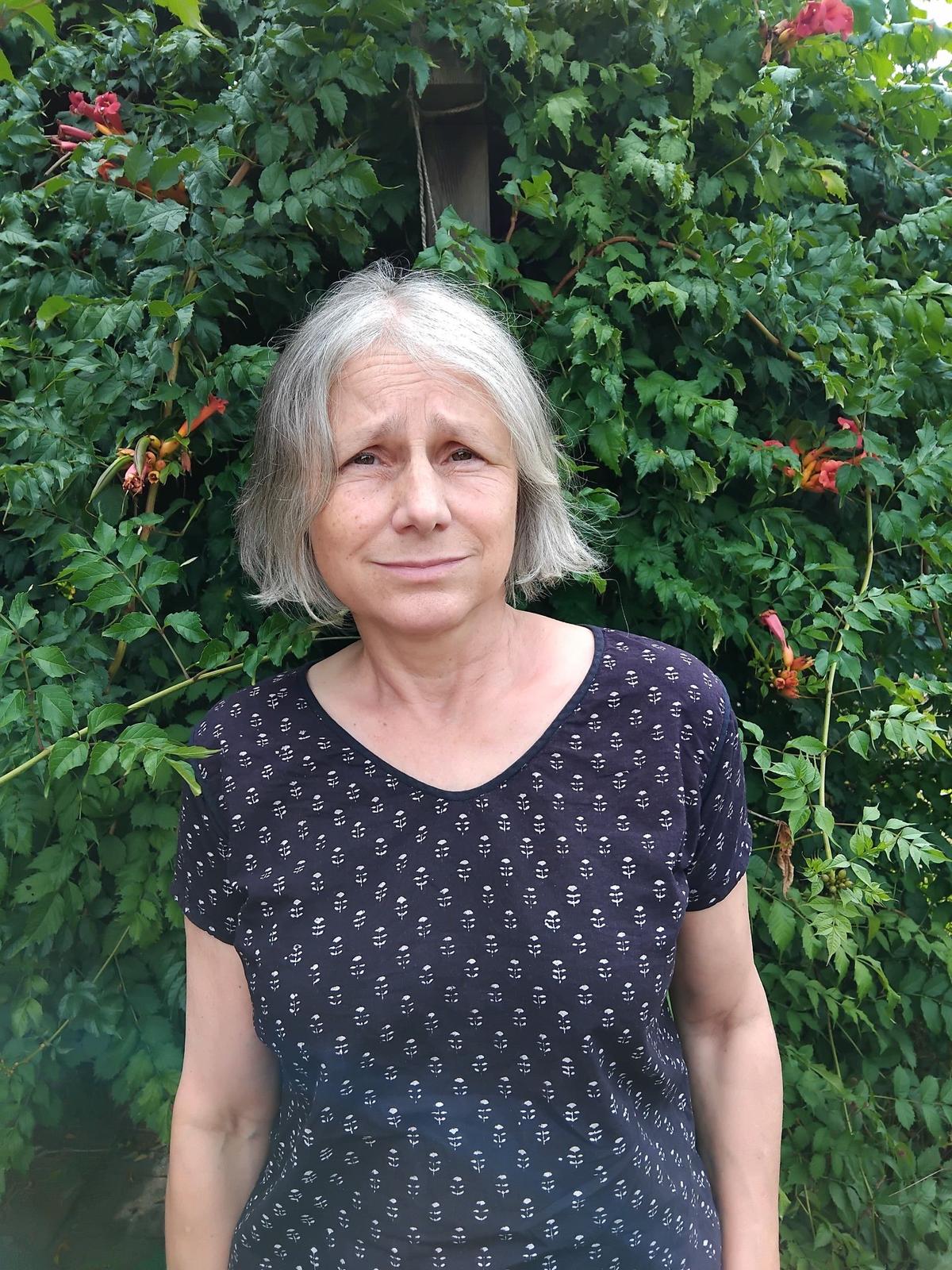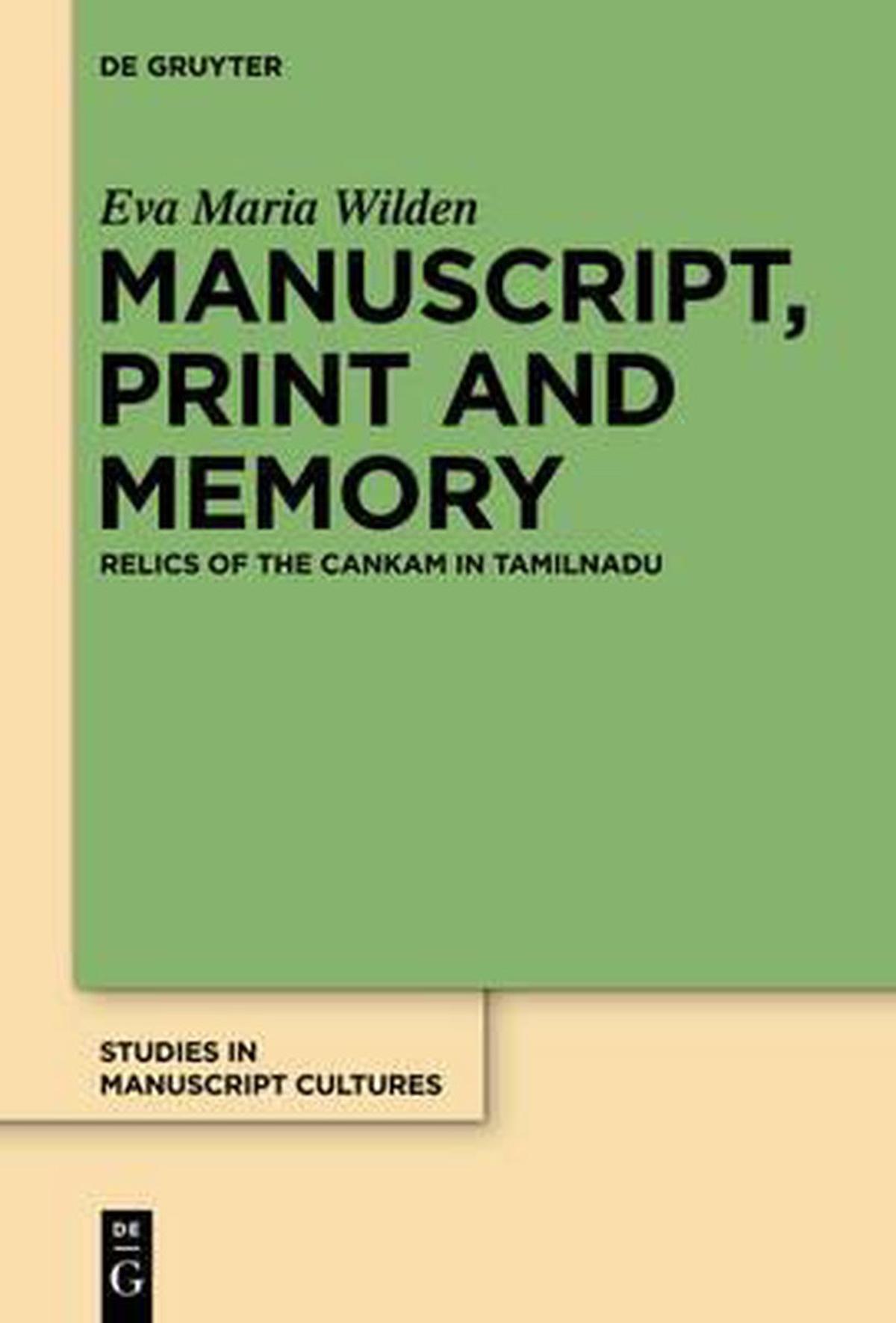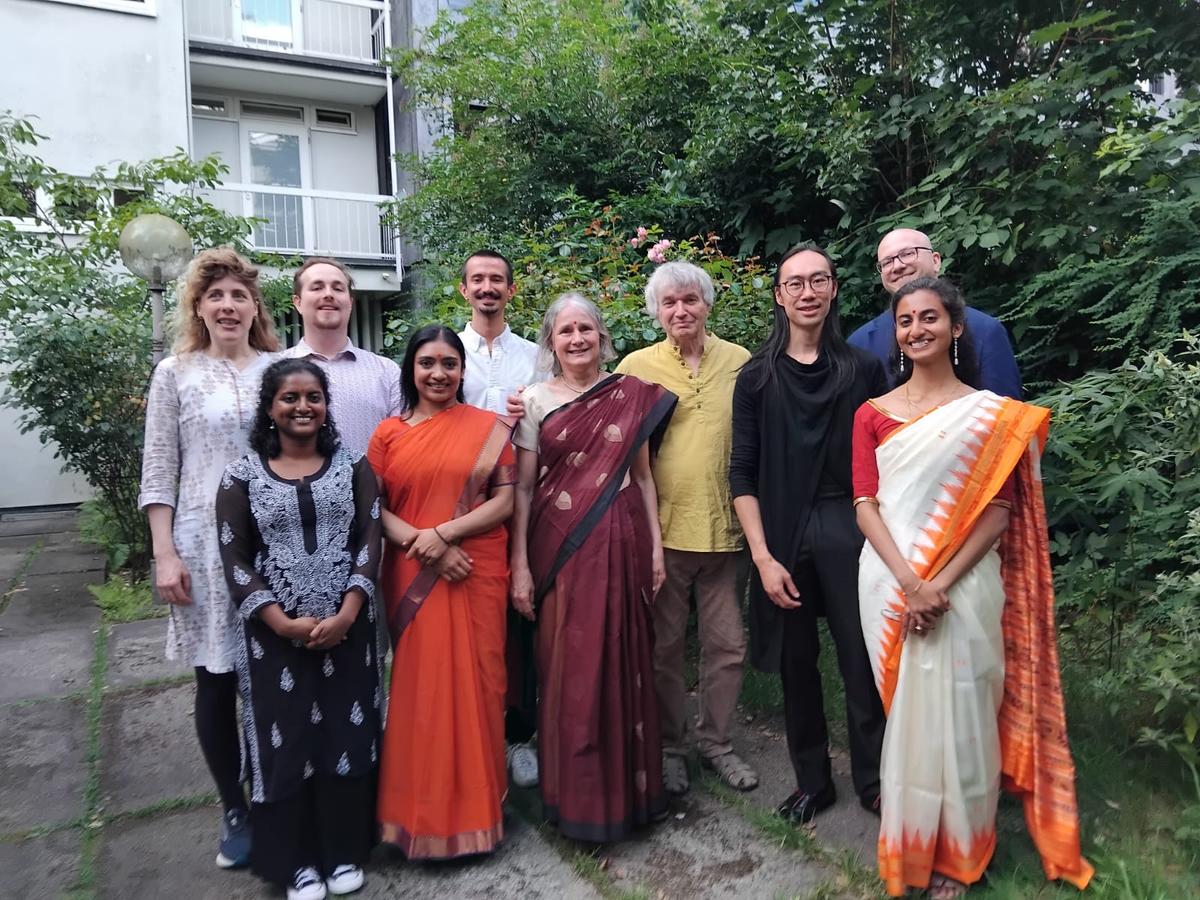Eva Wilden did her PhD in vedic rituals from the University of Hamburg. She later studied classical Tamil under S.A. Srinivasan. When she was a researcher at the French Institute, in Puducherry, she studied under Tamil scholar T.V. Gopal Iyer. Since 2017, she has been a Professor of Classical Tamil and Manuscript Studies, University of Hamburg. Eva Wilden also heads the Tamilex project in Hamburg. She has won the Presidential award ‘Kural Peetam’, for her outstanding foreign contributions in the field of classical Tamil. This award was instituted by the Central Institute of Classical Tamil, functioning under the aegis of Ministry of Education, Government of India. Eva Wilden is the author of many books and research articles on Sangam literature.
The following is an excerpt from her interview.

Prof. Eva Wilden receiving the Presidential award Kural Peetam from former President Pranab Mukherjee in New Delhi, in 2015.
| Photo Credit:
Shanker Chakravarty
From a study of Vedic rituals to Sangam literature — How did this happen? Do you still pursue research in Sanskrit literature?
The Vedic study was a long time ago, during my doctorate. Both Vedic and Sangam literature sound hermetic to outsiders: they make use of a code, and unless you understand the conventions in minute detail, you cannot understand what it is all about. In both cases, I was fascinated by the construction of such a code. Nowadays I have my hands full with Tamil alone.

Prof. Eva Wilden says she was fascinated by the construction of codes used both in the Vedic study and Sangam literature.
| Photo Credit:
Special Arrangement
How many manuscripts of Sangam literature are available and what is their provenance?
In my 2014 book, (Manuscript, Print and Memory, Relics of the Cankam in Tamilnadu), I mention 183 as the figure. This is partly misleading because 60 of them fall under the Tirumurukattruppadai, which had a life of its own as part of the Shaiva canon, and as a devotional text still in use. Sangam manuscripts come from Tamil Nadu, Kolkata (where the Vaiyapuripillai collection went), London and Paris. Sadly, not much is known about the provenance of most of them.

The book cover.
| Photo Credit:
Special Arrangement
How do you conclude when a certain manuscript was written?
Very rarely, there is a colophon, that is, a note at the end which states where, by whom, and when a manuscript was copied. For the others, one can only compare the material and the script. For instance, in palm-leaf, some letter forms changed over time, like periya ra, which was written with a single loop in the early period.
What interesting revelations have you found in the colophons?
Nothing much, except a few dates. What is interesting is the role played by sectarian transmission. Most of the manuscripts were copied in Shaiva circles, but there is a smaller number which was clearly transmitted by Vaishnavas, and the variations between two such versions can be considerable, as in the case of the Agananuru. Without Vaishnavite transmission, we would have lost a number of poems and their order.
Morphologically, how different is Sangam Tamil from bhakti literature, and the Tamil of a later period?
Pretty different. From the point of view of the modern Tamil speaker, the biggest differences are the absence of the present tense and of the plural suffix -kaL. The auxiliary system was also different, as well as some pronouns, such as yaan for naan, or utu in addition to itu (this) and atu (that).
Among the Azhwars, what is the reason for your interest in Nammazhwar’s works?
Firstly, my teacher, T.V. Gopal Iyer was very fond of Nammazhwar. Secondly, Nammazhwar makes the most sophisticated use of Sangam imagery, as seen in his messenger poems. But I have also worked on other Azhwars.
Andal says in her ‘Vanga kadal’ pasuram, ‘Sanga tamizh maalai muppathum’. So, was Andal familiar with Sangam literature?
It is highly likely that Andal, like all the bhakti poets, was familiar with Sangam poetry. Think practically. Where would poets like Andal or Nammazhwar have learnt the art of composing poetry?

Prof. Eva Wilden with the Hamburg Tamilex team.
| Photo Credit:
Special Arrangement
Tell us about the Tamilex project, which you head?
Tamilex is an undertaking financed by the German Academy of Sciences for a period of 24 years. This project format is unique to Germany. It allows fundamental research of great complexity and breadth. We bring together all the available sources to make, from scratch, a new historical dictionary of early Tamil. Our database includes manuscript images and transcripts, images of the older editions and transcripts, critical editions, translations and complete analytic word indexes of every form and every meaningful variant. We record material found in the commentaries, and entries in traditional lexicons such as the Tivakaram or the Pinkalam. We cross-reference earlier existing lexicons such as the Tamil Lexicon. On the basis of all these materials, we then create a new dictionary. The whole is conceived as an online tool, accessible to everybody across the world.
We promised the academy that we will cover all the literature of the first millennium — Sangam, Kizhkanakku, Perunkappiyam, Nalayira Divyaprabandham, the Shaiva Tirumuṟais and a volume of grammatical literature beginning with the Tolkappiyam. But we intend to include other texts too. For the lexicon of Tamil inscriptions, we have an agreement with another big project, the ERC Synergy Grant DHARMA.
Who are involved in Tamilex project?
The core team in Hamburg has nine scholars plus student assistants. Charles Li is our computational philologist. My husband Jean-Luc Chevillard, a specialist in the grammatical tradition, was honoured two years ago with the ‘Kalaignar Mu. Karunanidhi Semmozhi Tamizh Virudhu’ (award) by the Tamil Nadu government. Neela Bhaskar, our first postdoc, works on Silappadikaram. We have doctoral students — Leo Rishi Nelson Jones (Tamilneri Vilakkam), Nikolay Gordiychuk (Purapporul Venbamalai), Maanasa Visweswaran (Cirupanattrupadai) and Iona Macgregor (Manimekalai). Post-doc Roland Ferenczi, who will work on Pattinapalai, will soon join us. Our Indian team at Ecole française d’extrême-orient, Puducherry, has Tamil scholars Indra Manuel and T. Rajeswari.
We are supported by a huge external team, grown out of past collaborations with CNRS in Paris, SAI in Heidelberg, Oxford University, and the University of Bologna. In Europe, my professorship for classical Tamil is the only one. Thanks to Tamilex, we now have the biggest team of scholars working on Tamil outside of Tamil Nadu.


Leave a Reply